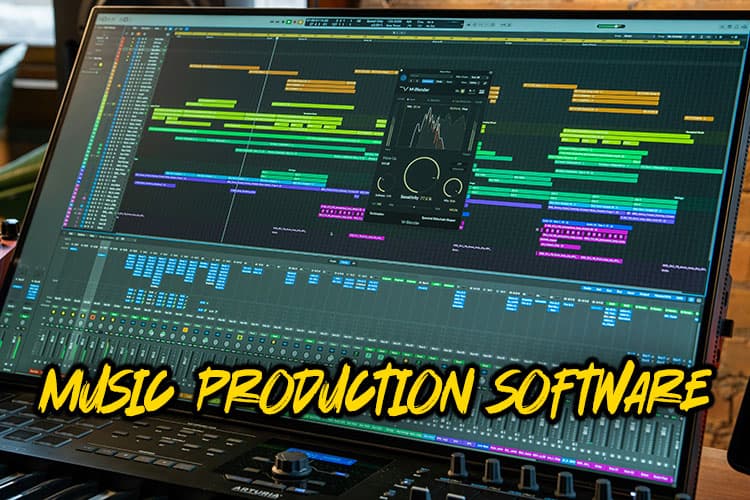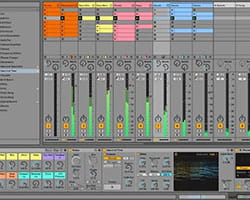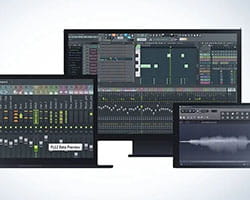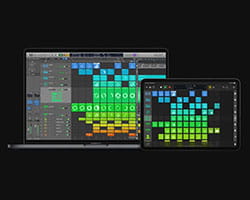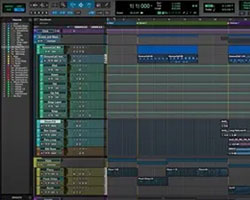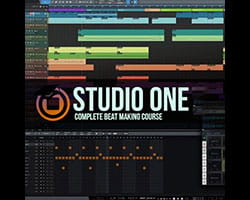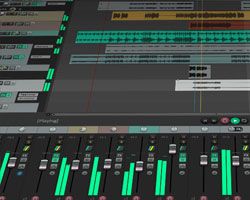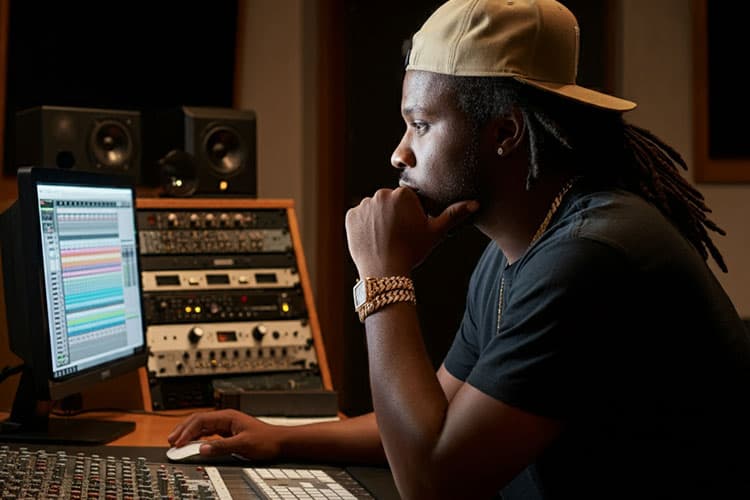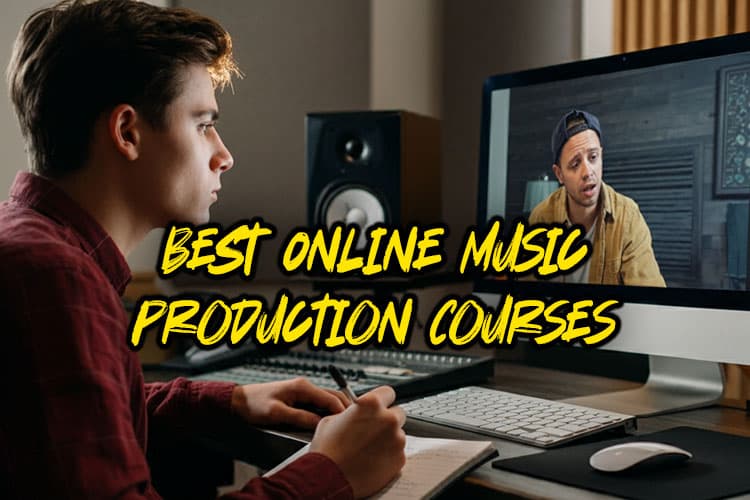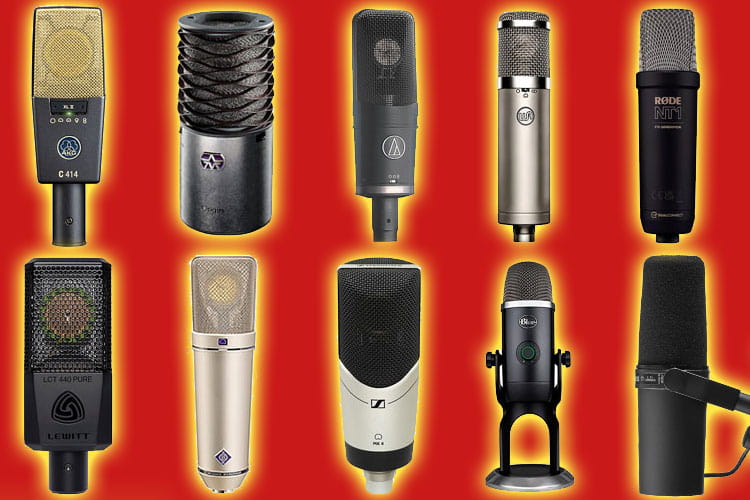Hey there, fellow music enthusiasts! 🎵 Are you ready to take your tunes to the next level? Well, buckle up because we’re about to dive into the world of music production software!
The music industry is booming, and for a good reason. Whether you’re a bedroom producer or a seasoned pro, having the right tools can make all the difference.
So, let’s explore the best music production software options for 2024 that’ll help you create chart-topping hits!
What is Music Production Software?
When I first stumbled into the world of music production software. It was like opening Pandora’s box, but instead of unleashing chaos, it unleashed a universe of sonic possibilities! So, let’s break it down for ya.
Music production software, in a nutshell, is the digital playground where we create, record, edit, and mix music. It’s like having an entire recording studio packed into your computer. Pretty wild, right?
Now, there are a few different flavors of this software out there. The big kahuna is what we call a DAW, or Digital Audio Workstation. That’s your all-in-one package for making music.
Then you’ve got virtual instruments, which are basically digital versions of real instruments.
And don’t forget about plugins – those nifty little add-ons that can do everything from making your vocals sound like they were recorded in a cathedral to adding some gnarly distortion to your guitar.
When you’re shopping around for music production software, there are a few key features you’ll wanna keep an eye out for.
First up, make sure it’s got solid recording capabilities. Trust me, there’s nothing worse than laying down the perfect take only to realize your software couldn’t handle it.
You’ll also want something with good editing tools – ’cause let’s face it, we all need a little polish sometimes.
I learned the hard way that not all software is created equal when it comes to MIDI support.
If you’re planning on using a lot of virtual instruments or working with electronic music, make sure your software has robust MIDI capabilities.
Oh, and don’t forget about the mixer! A good mixing interface can make or break your workflow.
Now, you might be wondering, “Why should I shell out for professional software when there are free options out there?” Well, let me tell you, the benefits are pretty sweet.
Professional software usually comes with a wider range of features, better sound quality, and more stability.
Plus, most pros use these tools, so if you’re planning on collaborating or working in a professional studio, it’s good to speak the same language, if you know what I mean.
But hey, don’t just take my word for it. The best way to figure out what works for you is to dive in and start experimenting.
Most software offers trial versions, so you can take ’em for a spin before committing.
Just be warned – once you start, it’s hard to stop. I’ve lost more than a few weekends to the black hole of music production!
Best Music Production Software for You
Alright, buckle up, ’cause we’re about to dive into the cream of the crop when it comes to music production software.
I’ve spent countless hours banging my head against the wall (sometimes literally – those bass drops can be intense!) testing these out, so you don’t have to.
A brief overview of the best music production software in 2024
- Ableton Live – This bad boy is the go-to for electronic music producers, and for good reason. It’s got a unique session view that’s perfect for live performances and on-the-fly creativity. I remember the first time I used it, I felt like a kid in a candy store – so many buttons to press, so little time!
Ableton Live Music Production Software
- FL Studio – Now, don’t let the fruity name fool you – this thing is a beast when it comes to beat-making. It’s got a super intuitive interface that makes laying down tracks a breeze. Plus, their lifetime free updates policy is pretty sweet. No more shelling out cash every time they add a new feature!
FL Studio Music Production Software
- Logic Pro X is your jam. It’s Apple’s professional-grade DAW, and it integrates seamlessly with MacOS. I gotta admit, I was skeptical at first (I’m more of a PC guy), but after using it at a friend’s studio, I was impressed by how smooth and powerful it was.
Logic Pro X Music Production Software
- Pro Tools It’s been the industry standard for years, and for good reason. The audio editing capabilities are unmatched. Just be prepared for a bit of a learning curve – this software doesn’t mess around!
Pro Tools Music Production Software
- Cubase Pro is another heavyweight contender. It’s super versatile and can handle pretty much anything you throw at it. I’ve used it for everything from orchestral scoring to heavy metal, and it’s never let me down.
Cubase Music Production Software
- Reason might be your cup of tea if you like the rack based approach. It’s like having a virtual studio rack that you can customize to your heart’s content. Plus, the built-in instruments and effects are top-notch.
Reason Music Production Software
- Studio One is the new kid on the block that’s been making waves. It’s got a really streamlined workflow that can save you a ton of time. I’ve found myself reaching for it more and more lately, especially for quick projects.
Studio One Music Production Software
- Bitwig Studio offers a really innovative modular approach to music production. It’s great for sound design and experimental stuff. Fair warning though – it can be a bit of a rabbit hole. I once spent three hours just messing around with one synth patch!
Bitwig Music Production Software
- Reaper is great if you’re on a budget but still want professional-grade tools. It’s incredibly affordable and surprisingly powerful. I’ve seen some pros use it exclusively, which says a lot about its capabilities.
Reaper Music Production Software
- GarageBand is Apple’s free entry-level DAW, and while it might not have all the bells and whistles of the pro-level software, it’s a great place to start. I actually made my first ever track on GarageBand, and while it might not have been a chart-topper, it got me hooked on music production!
Garage Band Music Production Software
How to Choose the Best Music Production Software for You
Alright, let’s get real for a second. Choosing the right music production software can feel like trying to pick your favorite child – if you had 10 kids and they were all robots with different features.
But don’t worry, I’ve been there, and I’m here to help you navigate this digital maze.
Budget
First things first, you gotta consider your budget. I remember when I first started out, I was scraping pennies together just to afford a decent pair of headphones.
The good news is, there are options for every budget. If you’re just dipping your toes in the water, you might want to start with a free DAW like GarageBand or Cakewalk. They’re great for learning the ropes without breaking the bank.
But let’s say you’ve got some cash to splash. In that case, you might want to look at more professional options like Ableton Live or Logic Pro X. Just remember, more expensive doesn’t always mean better for you.
I once blew a bunch of money on a high-end DAW only to realize it was way more complex than I needed. Talk about a facepalm moment!
Your skill level is another big factor to consider. If you’re a beginner, you’ll want something with a gentler learning curve. FL Studio is great for this – it’s powerful but also pretty intuitive.
On the other hand, if you’re more experienced, you might appreciate the depth and complexity of something like Pro Tools.
Genre
Now, let’s talk genre. Different DAWs have different strengths when it comes to certain types of music.
For example, if you’re into electronic music, Ableton Live is practically the industry standard. But if you’re more into recording live instruments, something like Cubase or Studio One might be more up your alley.
One thing I can’t stress enough is the importance of trying before you buy. Most DAWs offer free trials, and believe me, you want to take advantage of that.
I once bought a DAW based solely on reviews, only to find out that I hated the workflow. Don’t make the same mistake I did!
When you’re testing out different software, pay attention to how intuitive it feels.
Can you figure out how to do basic tasks without constantly referring to the manual? Does the layout make sense to you?
These might seem like small things, but trust me, they can make a huge difference in your day-to-day use.
Also, don’t forget to check if the software is compatible with your existing hardware and plugins. There’s nothing worse than getting all excited about a new DAW only to realize it doesn’t work with your favorite synth plugin.
Been there, done that, got the t-shirt (and the headache).
- Free options: GarageBand, Cakewalk, Audacity
- Mid-range options: FL Studio, Reason, Reaper
- Pro-level options: Ableton Live, Logic Pro X, Pro Tools
Remember, the “right” software is the one that works for you. Don’t get too caught up in what everyone else is using.
At the end of the day, the best DAW is the one that helps you make music with the least amount of friction. So take your time, do your research, and most importantly, trust your ears!
Pros and Cons of Each Software
Ableton Live
Pros:
- Excellent for live performances and real-time audio manipulation
- Intuitive session view for loop-based composition
- Powerful warping and time-stretching capabilities
- Large library of built-in instruments and effects
Cons:
- Steep learning curve for beginners
- More expensive than some competitors
- Video editing capabilities are limited
- Can be CPU-intensive, especially with complex projects
FL Studio
Pros:
- User-friendly interface, great for beginners
- Lifetime free updates
- Extensive plugin bundle included
- Flexible playlist and pattern-based workflow
Cons:
- MIDI editing can be cumbersome
- Audio recording and editing features are less robust than some competitors
- No built-in score editor
- Some users find the mixer workflow unintuitive
Logic Pro X
Pros:
- Comprehensive set of professional tools and features
- Excellent value for money (one-time purchase)
- Seamless integration with other Apple products
- Powerful built-in plugins and virtual instruments
Cons:
- Only available for macOS
- Can be overwhelming for beginners
- Some third-party plugins may not be compatible
- Occasional stability issues with larger projects
Pro Tools
Pros:
- Industry standard for professional audio production
- Excellent for recording and editing audio
- Powerful mixing and automation capabilities
- Seamless collaboration features
Cons:
- Expensive, especially with subscription model
- Steeper learning curve compared to some alternatives
- Less intuitive for MIDI and virtual instrument work
- Hardware requirements can be demanding
Cubase
Pros:
- Comprehensive feature set for all aspects of music production
- Excellent MIDI editing capabilities
- Advanced scoring and notation features
- Flexible audio editing and comping tools
Cons:
- Relatively expensive
- Can be resource-intensive on lower-end systems
- Complex interface may intimidate beginners
- Dongle-based copy protection can be inconvenient
Reason
Pros:
- Unique rack-based interface mimicking hardware
- Excellent for sound design and experimentation
- Built-in collaboration tools
- Now supports third-party VST plugins
Cons:
- Workflow can be unintuitive for those used to traditional DAWs
- Audio editing features are less advanced than some competitors
- Limited built-in mixing and mastering tools
- Some users find the interface cluttered
Studio One
Pros:
- Intuitive drag-and-drop workflow
- Excellent built-in plugins and virtual instruments
- Innovative features like Chord Track and Arranger Track
- Efficient CPU usage
Cons:
- Fewer third-party extensions compared to more established DAWs
- Limited notation and scoring capabilities
- Some advanced features only available in the pricier Professional version
- Less commonly used in professional studios
Bitwig
Pros:
- Highly modular and customizable interface
- Excellent for sound design and experimentation
- Native Linux support (in addition to Windows and macOS)
- Innovative features like The Grid for modular synthesis
Cons:
- Smaller user base, which means fewer tutorials and resources
- More expensive than some competitors
- Limited third-party plugin support compared to established DAWs
- Some users find the workflow less intuitive for traditional music production
Reaper
Pros:
- Extremely affordable with a generous evaluation period
- Highly customizable and lightweight
- Frequent updates and active developer community
- Efficient performance on lower-end hardware
Cons:
- Steeper learning curve due to high customizability
- Stock plugins and instruments are basic compared to other DAWs
- Interface can appear dated without customization
- Less common in professional studios
GarageBand
Pros:
- Free for macOS and iOS users
- Very user-friendly interface, great for beginners
- Seamless integration with Apple ecosystem
- Good selection of built-in loops and virtual instruments
Cons:
- Limited features compared to professional DAWs
- Only available on Apple devices
- Lacks advanced audio editing and mixing capabilities
- No support for third-party plugins
Must Have Features in Music Production Software
Let’s dive into the nitty-gritty of what makes modern music production software tick. Trust me, I’ve spent more nights than I care to admit geeking out over these features, so I’ve got the inside scoop.
MIDI
First up, we’ve got MIDI sequencing and editing. This is the bread and butter of digital music production, folks. It’s what lets you program those sick beats and lush melodies without having to be a virtuoso on every instrument.
I remember the first time I figured out how to quantize MIDI notes – it was like magic! Suddenly, my sloppy keyboard playing sounded tight and professional.
Just don’t get too carried away with the quantize button, or your music might end up sounding robotic. Unless that’s what you’re going for, in which case, quantize away!
Recording and Editing
Next, let’s talk about audio recording and editing tools. This is where things get real.
You want software that can handle multiple tracks of high-quality audio without breaking a sweat.
And when it comes to editing, you’ll want features like comping (combining the best parts of multiple takes) and pitch correction.
Just remember, with great power comes great responsibility. I once went overboard with pitch correction and ended up sounding like a cyborg. Not my finest moment.
Virtual Intruments
Virtual instrument support is another biggie. These days, you can have an entire orchestra at your fingertips without leaving your bedroom. It’s pretty wild.
I’ve got more virtual instruments than I know what to do with, but my favorites are definitely the ones that model classic analog synths.
There’s something about that warm, fuzzy sound that just gets me every time.
Mixing and Mastering
Now, let’s get into the mixing and mastering features. This is where your tracks go from sounding like a bedroom demo to a polished, professional production.
Look for software with a flexible mixer, high-quality EQ and compression, and a good selection of effects.
And don’t forget about automation – being able to create dynamic, evolving mixes is key.
I once spent an entire weekend automating every single parameter in a track. Was it overkill? Probably. Did it sound awesome? Absolutely.
Key mixing features to look for:
- Flexible routing options
- High-quality EQ and dynamics processors
- A good selection of effects (reverb, delay, etc.)
- Automation capabilities
Integration
Last but not least, let’s talk about collaboration tools and cloud integration.
Music production doesn’t have to be a solitary activity anymore. Many modern DAWs offer features that let you collaborate with other musicians in real-time, even if they’re on the other side of the world.
And cloud integration means you can work on your projects from anywhere. I’ve actually finished tracks while sitting in airport lounges!
One thing to keep in mind is that not all DAWs are created equal when it comes to these features. Some excel in certain areas but fall short in others.
That’s why it’s so important to really think about your workflow and what features are most important to you.
And hey, don’t get too caught up in having every single feature under the sun. At the end of the day, the most important thing is that you’re making music.
I’ve heard incredible tracks made with nothing more than GarageBand and a ton of creativity. So don’t let a lack of fancy features hold you back. Get out there and make some noise!
Tips for Choosing the Best Music Production Software
Alright, let’s get down to brass tacks. You’ve got your shiny new music production software, and you’re ready to make the next chart-topping hit. But where do you start?
Don’t worry, I’ve been in your shoes, and I’m here to share some tips I wish someone had told me when I was starting out.
Setup
First things first, let’s talk about setting up your home studio. Now, I know what you’re thinking – “I don’t have the space or money for a pro studio!” Well, guess what? You don’t need one.
When I started, my “studio” was a beat-up laptop and a pair of cheap headphones in the corner of my bedroom. The key is to make the most of what you’ve got.
Try to find a quiet spot where you can work without interruptions. And if you can, invest in a decent pair of studio monitors or studio headphones. Trust me, it’ll make a world of difference.
Resources
Next up, learning resources. The internet is your best friend here, folks. There are tons of tutorials, courses, and communities out there dedicated to music production.
YouTube is a goldmine – I’ve learned more from random YouTubers than I ever did in school (don’t tell my teachers I said that).
But don’t just passively watch videos. Get your hands dirty! Try to recreate what you’re learning in your own projects.
Some great learning resources:
- YouTube Tutorials
- Online Music Production Courses (Coursera, Udemy, etc.)
- Music Production Forums and Communities
- Your DAW’s Official Documentation (boring, I know, but often super helpful)
Plugins
Now, let’s talk about essential plugins and virtual instruments. It’s easy to go overboard here – believe me, I’ve been there.
I used to be a total plugin hoarder. But the truth is, you don’t need a million plugins to make great music. Start with the basics – a good EQ, compressor, reverb, and delay.
As for virtual instruments, try to cover your bases with a versatile synth, a piano, and maybe a drum machine. You can always expand your collection later.
Workflow
Workflow optimization is something that took me way too long to figure out. But once I did, it was a game-changer.
Take the time to learn keyboard shortcuts for your DAW. Set up templates for different types of projects. Organize your samples and presets in a way that makes sense to you.
It might seem tedious at first, but it’ll save you tons of time in the long run.
One thing I can’t stress enough is the importance of backing up your work. I learned this the hard way when my computer crashed and I lost months of work.
Now I’m borderline paranoid about backups. Use cloud storage, external hard drives, whatever works for you. Just make sure you’ve got copies of your precious tunes!
Don’t be afraid to experiment and make mistakes. Some of my best ideas have come from happy accidents. Like that time I accidentally routed my drum track through a guitar amp sim – it sounded terrible, but it sparked an idea that turned into a whole new track.
And finally, remember to take breaks and listen to lots of music. It’s easy to get so caught up in the technical side of things that you forget why you started making music in the first place.
Step away from the computer sometimes, put on your favorite albums, and just enjoy the music. It’ll recharge your creative batteries and might even inspire your next big idea.
So there you have it, folks. These tips should help you get started on your music production journey.
Remember, everyone starts somewhere, and the most important thing is to have fun and keep learning. Now go make some noise!
Additional Thoughts on Choosing the Best Music Production Software
Wow, what a journey through the world of music production software! 🎚️🎛️ We’ve covered the cream of the crop for 2024, and I hope you’re feeling inspired to start creating your next masterpiece.
Remember, the best software is the one that fits your needs and workflow. Don’t be afraid to experiment with different options – many offer free trials, so take advantage of that!
Whether you’re laying down beats, crafting melodies, or mixing your tracks, the right music production software can be your ticket to sonic excellence.
So, what are you waiting for? Go ahead, download that DAW, and let your creativity soar! Who knows? Your next track might just be the one that gets the whole world dancing. Rock on, producers! 🎸🎧

